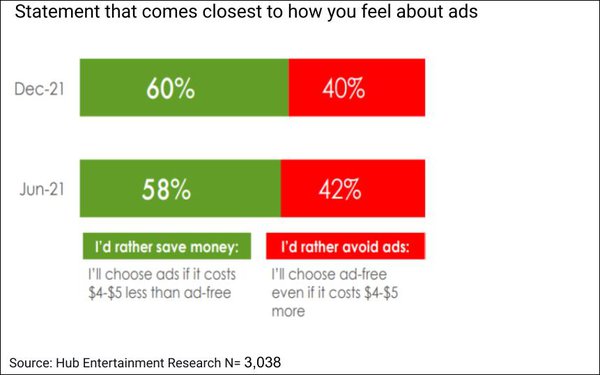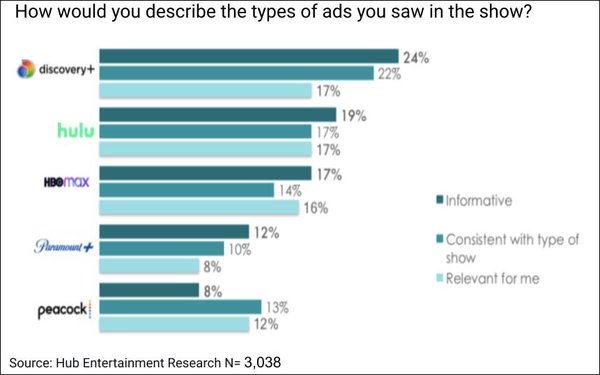
A new study indicates that relevance trumps even
high ad loads when it comes to how consumers view their experiences of watching shows on streaming TV — and finds Discovery+ to be a prime example of this dynamic.
For the second wave of
its “TV Advertising: Fact vs. Fiction” study, completed in December, Hub Entertainment Research asked 3,038 U.S. TV viewers (minimum one hour per week) ages 14 to 74 (U.S. Census balanced)
about a recent experience watching a show on an ad-supported platform.
On the negative side, the percentages who rated the number of ads “unreasonable” rose from 25% among those
estimating that there were five or fewer ads per 30 minutes, to 36% among those estimating six to 10 ads, to 46% estimating 11 or more ads.
Also, asked to rate the overall experience of
watching the show (not just ads), positive ratings declined from 44% among those estimating five or fewer ads to 41% among those estimating six to 10 ads, to 33% among those estimating 11 or more
ads.
advertisement
advertisement
On the flip side, however, among those who reported that the show’s ads featured products that matched their interests (regardless of the number of ads estimates), 58% rated their
viewing experience as positive.
Exemplifying this, when asked to compare ad loads and experiences with shows watched on various streamers, 50% said they saw more ads on Discovery+ than the
other services (the highest of any service included in the survey), yet 60% described the number of ads on Discovery+ as “reasonable.”
In comparison, just 33% said they saw more
ads on Paramount+ (the smallest percentage among the services included), but the number viewing that platform’s ads as “reasonable” was slightly lower than for Discovery
(59%).
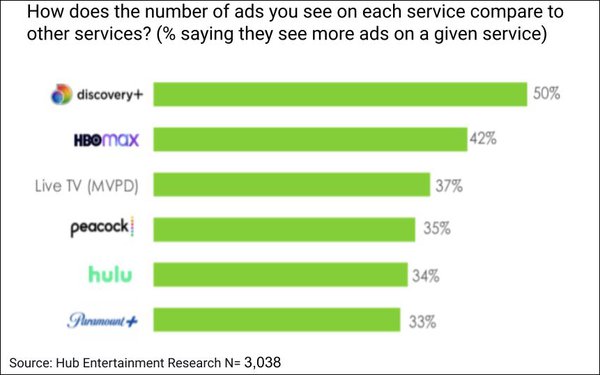
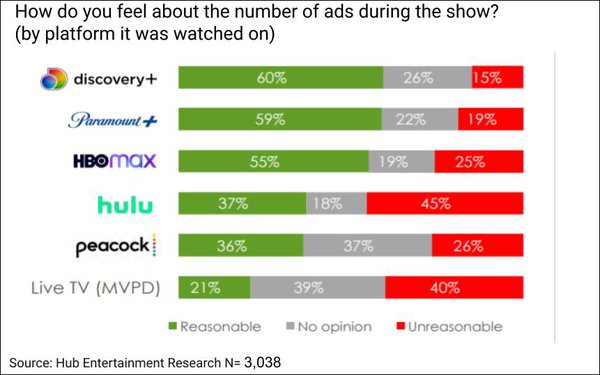
Why the seemingly greater
tolerance for Discovery+ ad loads?
More respondents found Discovery+’s ads to be “informative,” “consistent with the type of show” and “relevant for
me” than those of Paramount+ and most of the other services included. (See chart top of page.)
Overall, most respondents also seemed tolerant of targeting: 55% of those who said the ads
on a given service seemed to reflect products that they have purchased or searched for rated their overall experiences positively.
Asked specifically how they feel about ads targeted to them
based on shared information about them, 56% of total respondents said they were neutral (no strong negative or positive feelings).
Just 16% expressed a negative reaction — down six
points from the results for the same question asked by Hub in the first wave, conducted in June 2021. And 28% actually reported a positive reaction to targeted ads — up five points versus the
June survey.
Most expressed comfort with targeting based on the types of shows they watch (61%), the products they have purchased (51%) and the products for which they have searched (50%).
However, fewer than half expressed willingness to let advertisers target them based on information about the websites they visit or what they post on social media.
Ad-supported TV providers
have been focused on trying to delivery reach and frequency for advertisers without overloading viewers with ads, notes Peter Fondulas, Hub principal and co-author of the study. “So far, the
primary focus has been on finding the ad load sweet spot that both groups find reasonable. But this research — in particular, the findings for Discovery+ — suggests that the key to
overcoming ad load concerns is delivering spots that viewers clearly recognize as in line with their interests. The vast majority of viewers are not opposed to sharing the kind of data that will allow
that to happen.”
The latest survey also found that ads are not necessarily associated with higher self-reported churn, even on paid platforms.
While the assumption might be that
churn would be higher on service tiers that have ads, as well as require payment (albeit lower than on their no-ads tiers), this varies by brand, with some ad-supported tiers showing lower intended
churn rates:
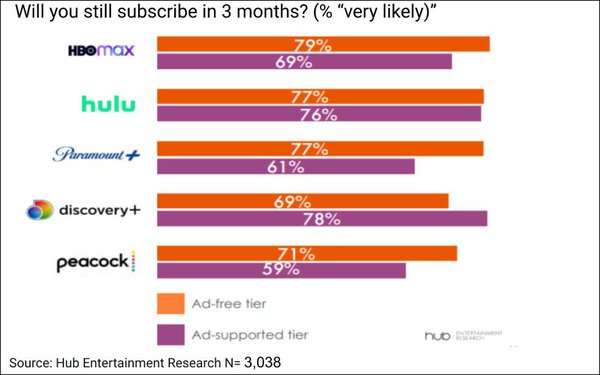
This second wave also found even
more U.S. TV viewers saying that they use ad-supported video-on-demand services: 47%, up from 35% in last June’s survey. One reason for the bump, however, is that HBO Max had not yet launched,
and so wasn’t included in the first wave.
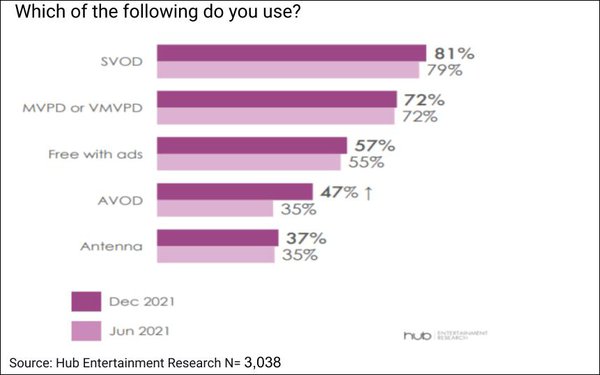
The second-wave results also show a slightly larger majority (60% versus 58% in June) agreeing that they would choose an ad-supported service if it costs $4 to $5 less than the ad-free one, and a
slightly smaller percentage (40% versus 42% in June) saying they would choose an ad-free service even if it cost $4 to $5 more than the one with ads.
